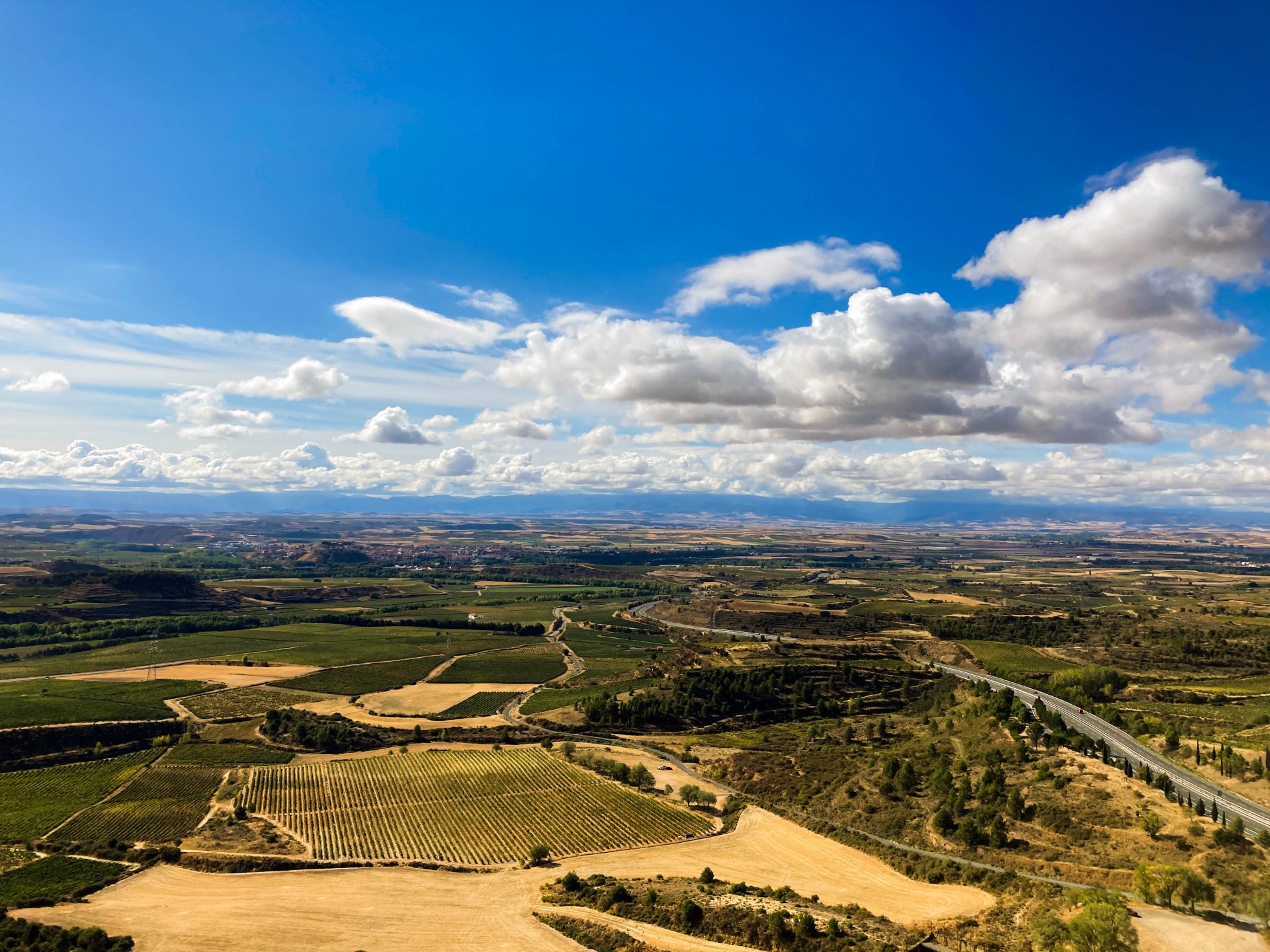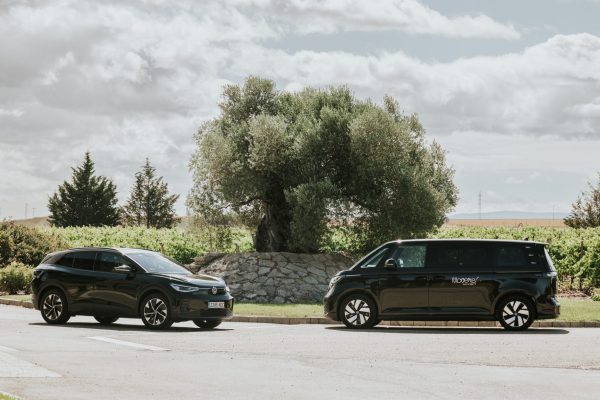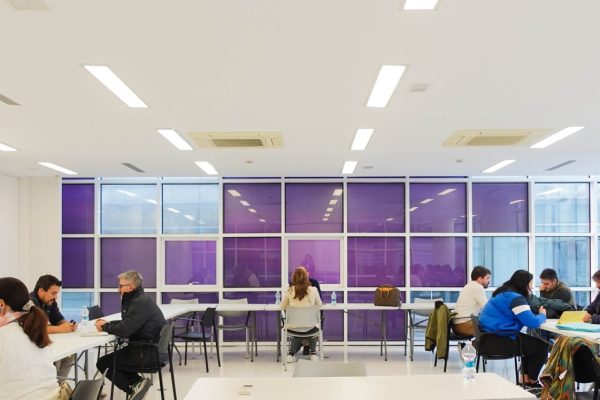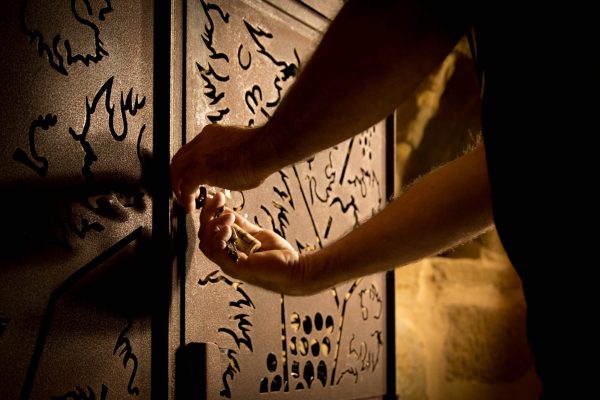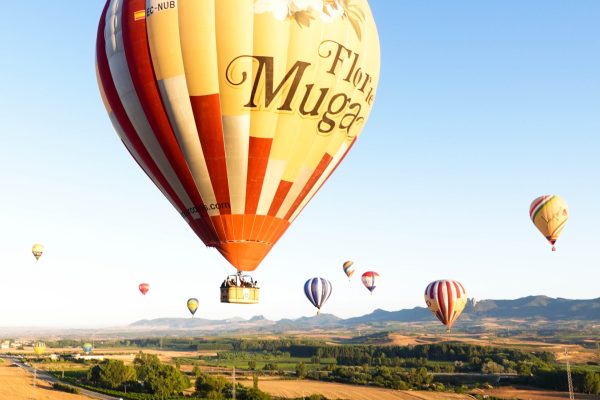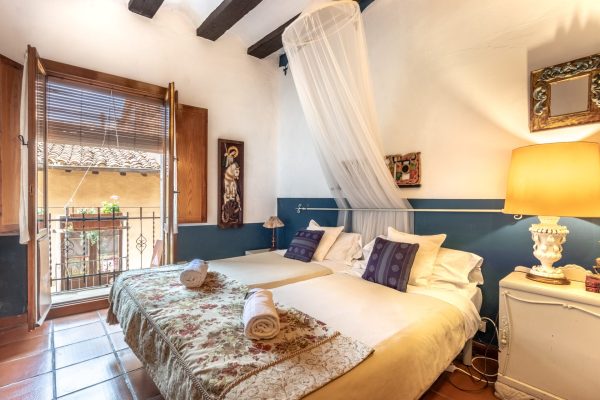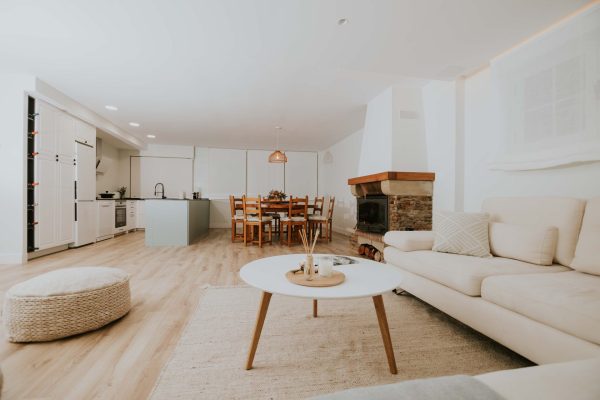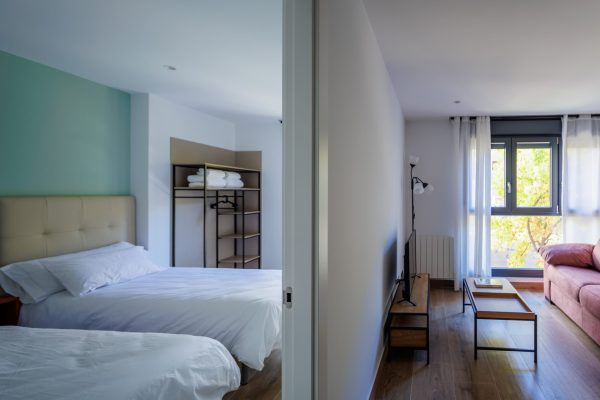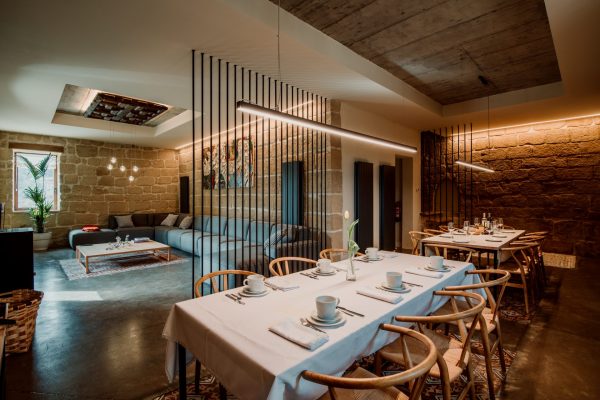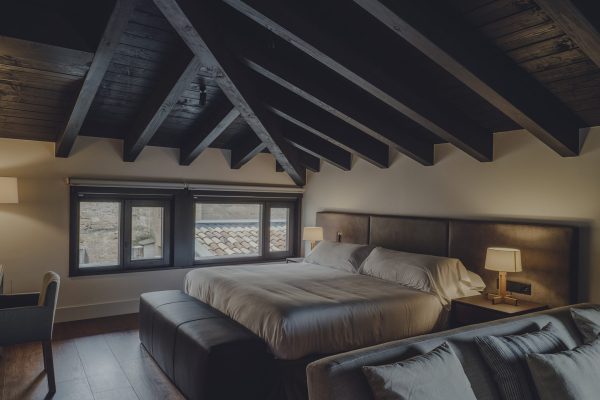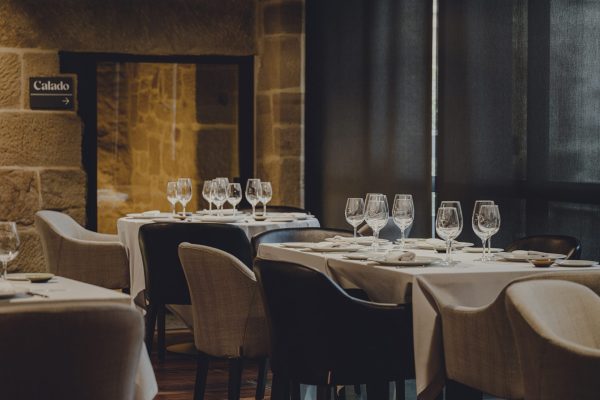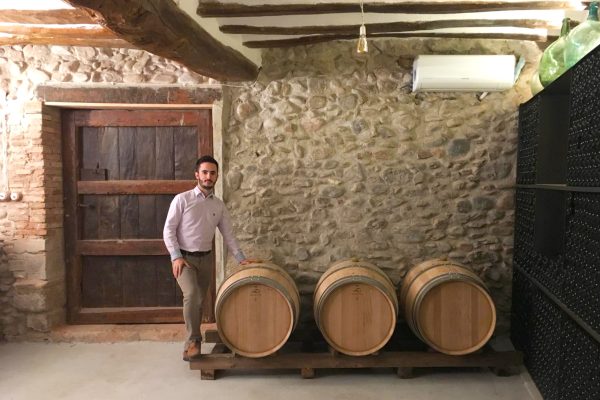Upper Rioja is the region's wine-growing area par excellence. With endless fields of vineyards, charming villages and a rich cultural heritage. It is here that some of the the best wines of the world recognised and valued by the best world-class critics in every corner of the globe.
Within La Rioja Alta there are 3 regions bathed by 3 rivers that flow into the Ebro RiverSpain's largest river, and a fundamental element in landscape and climate in this region:
- The Haro region The region, bathed by the river Tirón, has 26 municipalities.
- The Nájera region The Najerilla River has 25 municipalities.
- The the region of Santo Domingo de la Calzada The Oja river has 16 municipalities.
Below, you will find a list of the most emblematic places that you can't miss in La Rioja Alta.
1. Haro region: Land of wines in La Rioja Alta

The region of Haro is the area with the highest number of longer winemaking tradition of all La Rioja. With a beautiful riojan vineyard landscape and hundreds of small and not so small wineries located in every village in the region.
1.1. Haro Capital of Rioja
Haro is a small city with the name of wine and a glorious past, as the popular saying goes: "Haro, Paris and London", or the other, "Here we are in Haro and you can see the lights", referring to the fact that it was one of the first towns to have street lighting.
The first thing that catches Haro's attention is the Station DistrictIt is home to the largest concentration of century-old wineries in the world, which welcome more than 250,000 tourists every year.
In the old quarter of Haro we find its most traditional tapas area, La Herradura.
In the old town you can visit the St. Thomas Aquinas Parish Churchas well as the Peace Squareits City Council, its tourist office and library, and various small palaces which reflect the economic strength of certain families in the past.
A visit to the Gardens of La Vega and the Basilica of La Vega to which the Jarreros are so devoted and which every 8th September they take through the streets in the Rosary of Lanterns.
If you want to enjoy spectacular views in a unique location, you can go to the San Felices de Bilibio Chapel at the top of the cliffs. Place where every 29th June takes place the international Wine Battle.
You can consult all the detailed information in this article on Haro.
1.2. Unique enclaves and villages in the district of Haro
It is no coincidence that Haro and its region is the most touristic area of the region, as it is home to some of the most important tourist attractions in the region. the most beautiful villages in La Rioja, as well as unique corners worth a visit.
1.2.1. The Castle of Davalillo a medieval jewel
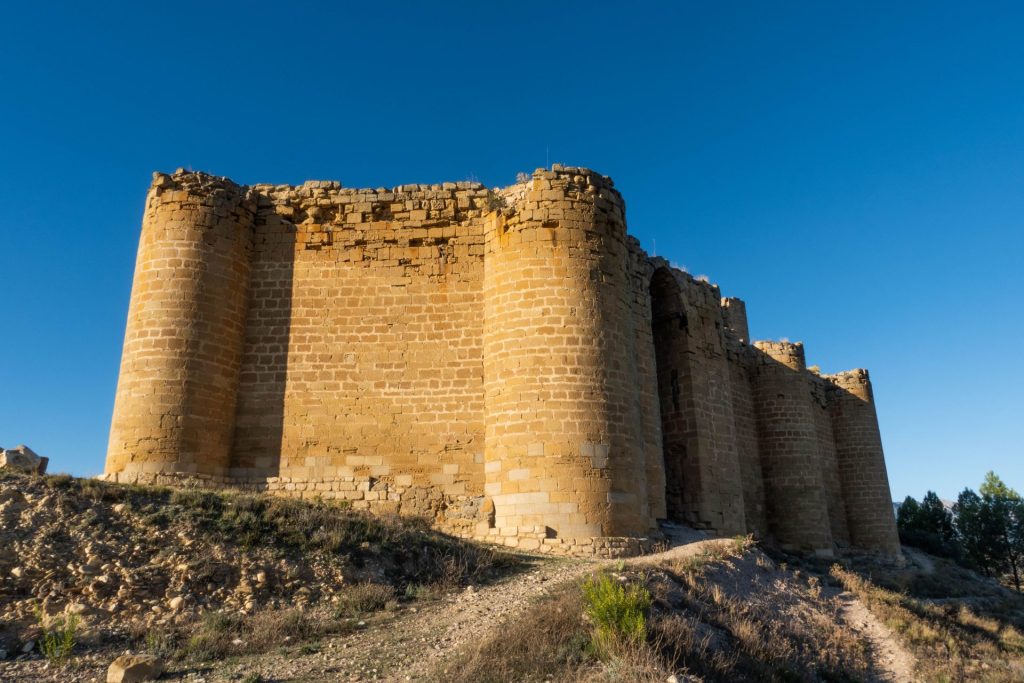
The castle of Davalillo is a medieval military enclosure located in the municipality of San Asensio. It is a Romanesque-style castle, located on a hill overlooking the valley of the river Ebro. At the foot of the castle is the hermitage of Nuestra Señora de Davalillo, which must have been the church of the disappeared village of Davalillo.
The castle has a outer walled enclosure and a tower of homagewith a polygonal ground plan.
The castle is documented for the first time when Enrique de Trastámara In 1367 it was handed over to Carlos El Malo of Navarre. Manor of the Manrique family, Dukes of Nájera; cause of confrontation with the Velasco family, constables of Castile.
The pilgrimage of the Virgin of Davalillo is a traditional celebration in which the whole town of San Asensio also climbs the castle with the participation of all the people of San Asensio.
1.2.2. The Monastery of La Piedad in Casalarreina
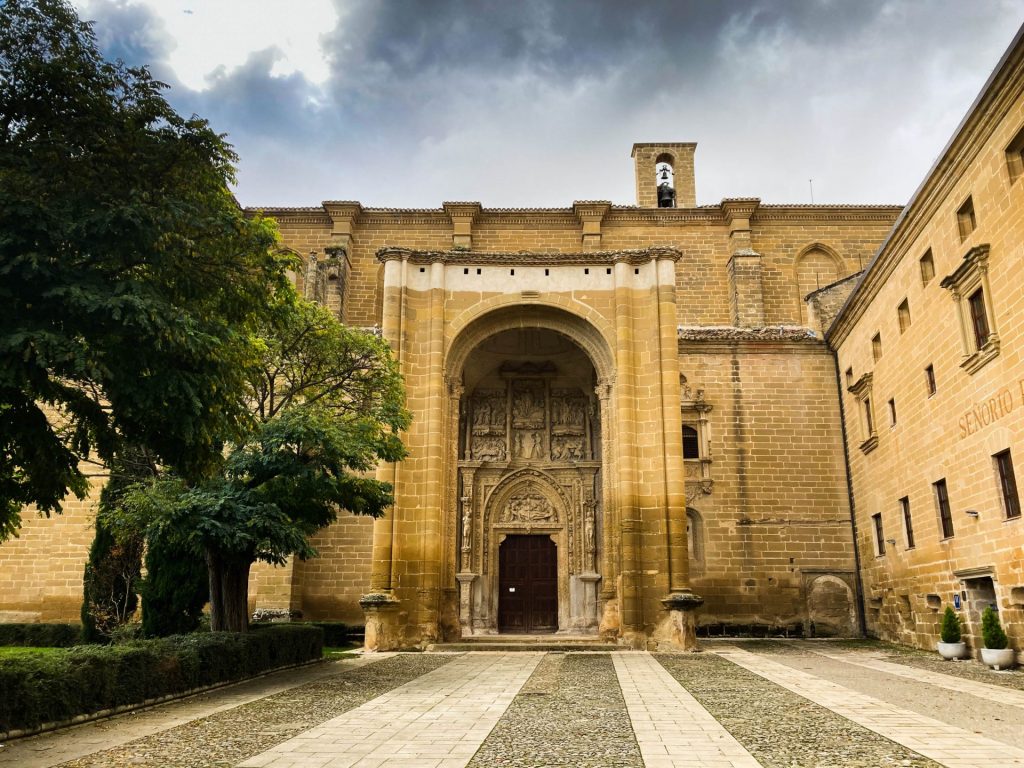
The construction of the convent began on 10 April 1514 in Elizabethan Gothic and Renaissance Plateresque style. As a result of the decision of a bastard brother of the Fernández de Velasco family, Don Juan, who, as his brothers had a palace here, decided to build a monastery.
It has church and cloister Gothic with a square floor plan and double height.
The church was consecrated on 13 March 1522, on the occasion of the visit of the pope elect Hadrian VIwho spent the night in Casalarreina on his way to Rome.
Despite its single nave, the interior of the church is spacious and bright. In the nave and in the niche-shaped side chapels, which are connected to each other, there are further Baroque altarpieces and a small Plateresque altarpiece. On the floor of the hall, a marble slab belonging to Juan Fernández de Velasco proclaims in an epitaph composed in golden letters: "O Jesus, do not look upon my woes, for do not forget your name".
Today, it is a monastery of Dominican Contemplative nuns.
In Casalarreina we recommend you our host La Vieja Bodega for lunch or dinner.
1.2.3. Estrella Monastery
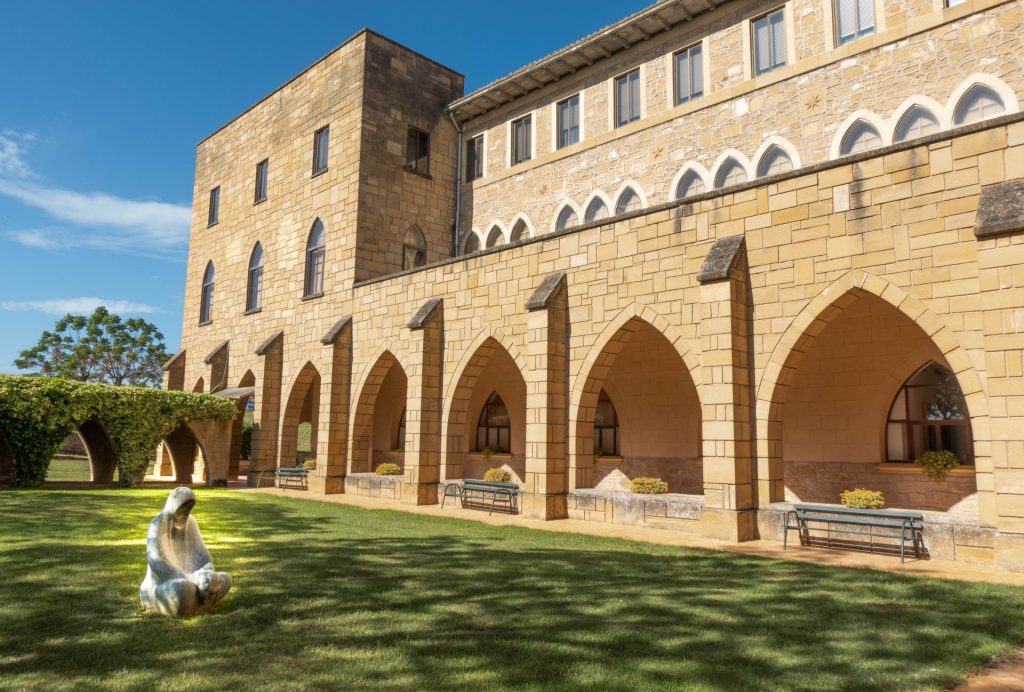
In 1060, Sancho Garcés, King of Pamplona, donated the hermitage of Santa María de Ariceta to Nuño, Bishop of Armentia in Alava. A few years earlier, according to the chronicles, the following happened "the appearance of the image of Our Lady on an oak tree engraved with a star"..
The original hermitage of Aritzeta was equidistant from the prodigy oak and a spring, which served as a source of relief for pilgrims. Hermits took care of the hermitage until around 1403, when the Hieronymite monks of the Monastery of San Miguel del Monte in Burgos officially took charge of the custody of the hermitage by order of Juan de Guzmán, bishop of Calahorra and La Calzada. In 1410, the monks, provided with a papal bull, carried out the transfer. Aritzeta would be the monastery, and San Miguel would serve as a farm and resting place.
The Sanctuary of Santa María de la Estrella, from gothic and neo-gothic styleIts construction began in 1419 and its period of greatest splendour was in the 15th and 16th centuries.
During the 19th century it suffered great deterioration until 1951, when the Brothers of the Christian Schools acquired the monastery.
Since 1997 it has housed a Secondary School.
1.2.4. The Hermitage of Santa María de la Piscina

The hermitage of Santa María de la Piscina is the most complete and beautiful Romanesque building preserved in La Rioja. It belongs to the full Romanesque period, as it was begun around the middle of the 12th century, and has no later additions (except for the coat of arms of the Divisa, placed above the south doorway around 1537). Its interest lies in the fact that it is the only Romanesque hermitage in the region that remains in a fairly pure state and in its early chronology.
The archaeological site consists of the hermitage of Santa María de la Piscinaa necropolis repopulation, a village with semi-rural dwellings y remains of fortifications or watchtowers.
In the 14th century was depopulated by the Castilian civil war and its inhabitants would later form the nearby village of Peciña.
1.2.5. The Riojan Vineyard Landscape
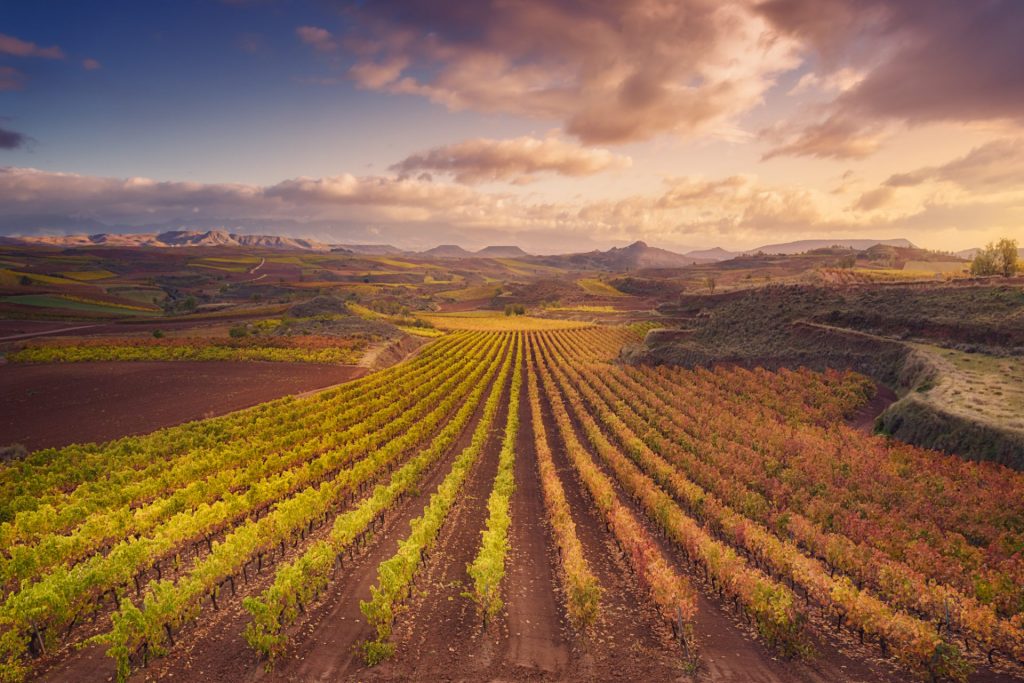
La Rioja Alta is a land named after wine, not in vain. its fields are full of vineyards in this area of the Ebro valley.
The picture is curious to say the least at any time of the year with vineyards of infinite renques and bare in winter, green in spring, full of grapes in summer and a whole explosion of colours in autumn.
During the months of september and october the vine gradually loses its brightness once the fruit has been harvested. This means that the bright green that starts in spring and continues throughout the summer turns yellow in the case of white grape vines and reddish tones in the case of black grape vines. In addition, the different grape varieties take on different nuances that together create a picture worthy of photography.
In this article you will find the 5 most beautiful villages in the Haro region.
2. The region of Nájera: Cradle of Medieval Kings in La Rioja Alta

The region of Nájera has a great monastic heritage where the great Monastery of Santa María la Real stands out, in the cloister of which are buried important members of the medieval royalty.
2.1. Nájera and its Monastery of Santa María la Real
Nájera was the capital of the Kingdom of NahrIt was the cradle of the kingdoms of Navarre, Aragon and Castile. It was the cradle of the Kingdoms of Navarre, Aragon and Castile.
Historically, the Monastery of Santa María La Real of Nájera is one of the most important in the region with a heritage of incalculable value.
Thousands of pilgrims pass through Nájera every year, travelling along the Camino de Santiago. Other highlights in the locality include religious monuments such as the Convent of Santa Elena, the church of La Santa Cruz and the Chapel of the Mother of God.
In recent years, major excavations have been carried out at the Cerro de la Mota where the Castillo de la Mota stood, as well as the Alcazar, on the caves between the castle and the town centre.
Every year the "Chronicle of Najerense"A medieval spectacle that represents a part of the history of the city, declared a site of cultural interest.
2.2. Places and villages worth visiting in the district of Nájera
La comarca de Nájera cuenta con diferentes pueblos, enclaves y monasterios medievales que merecen una visita.
2.2.1. The Cistercian Abbey of Cañas

This Cistercian Abbey is one of the first to be founded in Spain.
The construction of this monastery can be divided into three stages, the Romanesque of which hardly any vestiges remain, the gothic which would correspond to part of the church and chapter house, dated to the second half of the 13th century, and the post-16th century in which the construction of the central nave was continued, leaving the two side naves unfinished.
The church of the monastery is surprising for its high brightness through its large windows. The large renaissance altarpiece was ordered to be built by the abbess Leonor de Osorio around 1523 in the form of a triptych that until 1975 was in the prebistery, and is now located at the foot of the church.
The façade of the chapter house stands out for its singular beauty with its three pointed arches decorated with plant motifs. Inside, the most outstanding feature is the gothic style tomb from the early 14th century by the Blessed Doña Urraca López de HaroShe was the daughter of the founders, who wore the habit from a very young age and became the fourth abbess of the community. She died in 1262, and her body is preserved incorrupt.
The abbey has two museums: the Relic Room containing four groups of collections dating from the year of the monastery's foundation to the 20th century; and the chair museum or warehouse, in which the following have been installed various altarpieces that existed in the churches, carvings, reliefs and paintings of singular interest.
The community of Cistercian nuns have continuously inhabited the monastery since its foundation. and devotes himself to manual labour and prayer. They decorate porcelainthey elaborate sweetsthey make rosaries and have a small hostelry.
2.2.2. The Roman town of Tricio
At first glance, Tricio might seem to be just another village in La Rioja Alta, but there are numerous written references that confirm the ancient origins of this village, even before the Christian era.
The earliest testimony is provided by Apianus Alexandrinus in 154 BC, naming the Tritians along with other tribes who opposed Roman rule. Ptolemy, a Greek geographer of recognised authority, cites, in the 2nd century, a Tritium MegalonThis nickname, borrowed from the Roman conquerors, gives an idea of the importance of the town at the time.
We invite you to stroll through its streets and squares, as well as to visit the Basilica of Santa María de los Arcos and the parish church of San Miguel.
2.2.3. Monasteries of Suso and Yuso in San Millán de la Cogolla
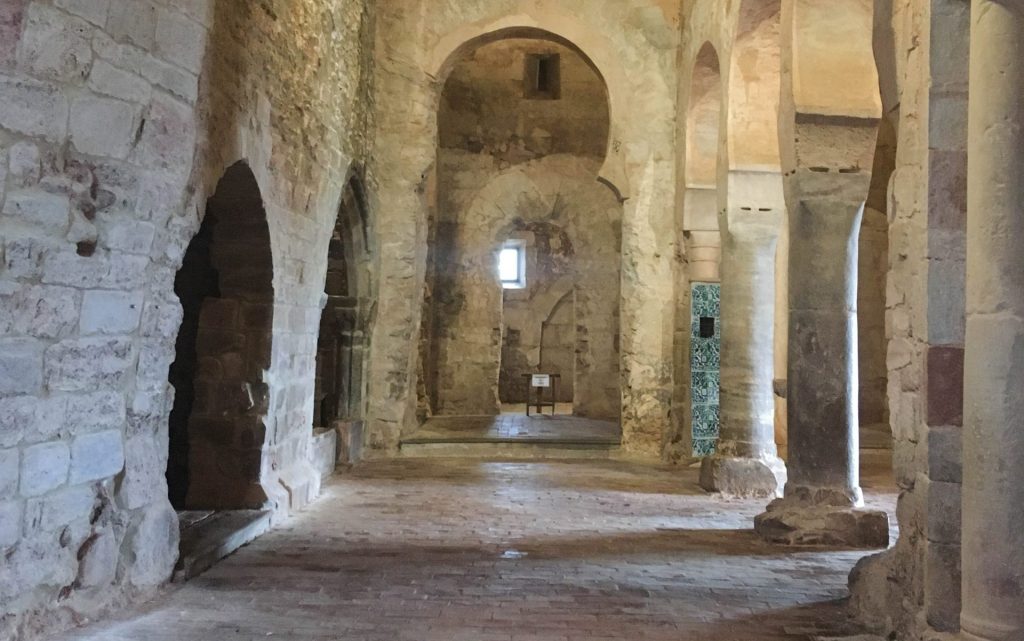
The Monasteries of Suso and Yuso have been declared World Heritage by UNESCO in 1997, for historical, artistic, religious, linguistic and literary reasons.
The Monastery of Suso is the older of the two, built at the end of the 6th century from the cave where the the hermit Saint Millan died in 574.
It was in this monastery where a monk wrote the Emilian GlossesThe first annotations in the margins of the pages are written in Latin. These annotations were written in the Romance language and the first annotations written in Basque also appear, which is why they are considered to be in the Basque language. cradle of Castilian and Basque.
He also lived in this monastery Gonzalo de Berceothe first poet of known name in Spanish.
Reference can be made to three stages in the construction of the Monastery of Suso:
A first stage of the Visigothic Cenobio of which the walls and several arches are preserved. A second Mozarabic stage The entrance gallery and the main nave of the church, in the Caliphate style with horseshoe arches, date from the first half of the 10th century. And a third stage of the Romanesque extension on the occasion of the sanctification of San Millán in 1030.
In the "portaliello" of the Monastery of Suso, you can also find the sarcophagi of the Seven Infantes de Lara.
For its part, the Monastery of Yuso This majestic and larger building was ordered to be built in 1053 by King García Sánchez III of Navarre, "the one from Nájera".
2.2.4. Anguiano and the Monastery of Valvanera

The Monastery of Valvanera is located in in the middle of nature at an altitude of 1000 metres above sea level. Valvanera being the Patron Saint of La Rioja.
The history of its foundation is recounted in the Latin Historywritten in 1419 by Rodrigo de Castroviejo (Abbot of Valvanera), as a translation of a 12th century Latin text probably written by Gonzalo de Berceo.
He says that the thief Nuño Oñezhearing the prayer of his intended victim, he repented of his crimes, commending himself to the Virgin Mary.
"One day during his prayers, an angel appeared to him, telling him to go to the valley of Valvanera in search of an oak tree that stood out from the othersAt the foot of which a fountain sprang up and which contained several swarms of bees, where he found an image of the Virgin Mary. He went there with the cleric Domingo de Brieva and found the image. Between the two of them they moved it to a nearby cave in a rocky outcrop, where they would build the first hermitagelocated in the current neoclassical chapel of Santo Cristo to worship the Virgin".
This discovery would give rise to the Monastery of Valvanera, as the image would gather around the image of the monastery. group of hermits who over time adopted a regular life inspired by the Rule of Saint Benedict, the first Abbot of the Monastery being Don Sancho in 990.
The first Visigothic church was built in the 10th century with the arrival of the first hermits, it would be succeeded by the other pre-Romanesque consecrated in 1073. And behind it was built a Romanesque church. The is from the late Gothicfrom the end of the 14th century.
Throughout the 16th century, numerous reforms were carried out The building of an abbey chamber, the access stairs, the library, the refectory and new cells, among others, were built on the cloister building. In the 17th century, the new porter's lodge, the new kitchens, and one of the most characteristic features of the monastery, the arcade gallery of the south façade.
Between 1835 and 1883, however, the monastery was abandoned as a consequence of the disentailment of Mendizábal.
From the Monastery of Valvanera a beautiful circular route of 4.5km affordable for everyone to enjoy the surrounding nature.
3. Region of Santo Domingo de la Calzada: A stop on the Camino de Santiago as it passes through La Rioja Alta.

The region of Santo Domingo de la Calzada straddles the border between the valley area and the mountains of La Rioja. With a cool climate and many places to visit.
3.1. Santo Domingo de la Calzada, its cathedral and its pilgrims
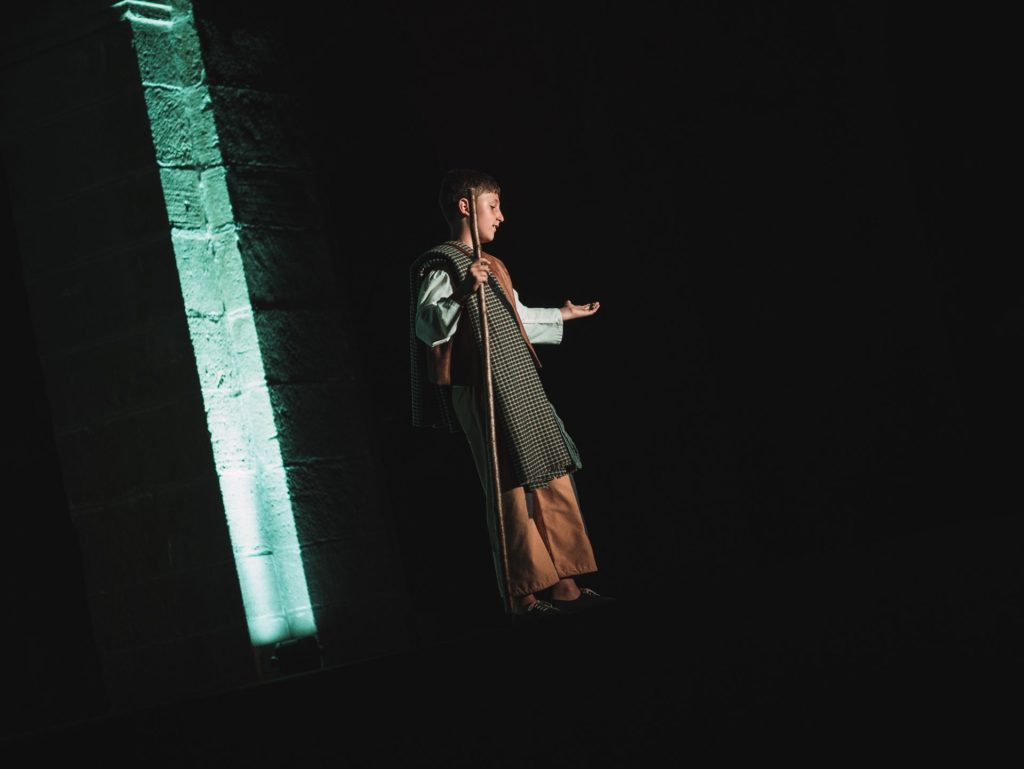
Santo Domingo is a typical village on the Camino de Santiago which highlights the cathedral with its imposing free-standing tower. A visit to both the cathedral and the tower is a must. You can't leave Santo Domingo without being told about the Miracle of the Hen, That is why its Cathedral is the only temple where animals live, a cockerel and a hen.
Its religious heritage is completed by the Convent of San Francisco Herrerian style with a cloister dating from 1535, the Cistercian abbey inhabited by nuns since 1621 and 4 chapels.
Santo Domingo has a walled enclosureThe largest that remains in La Rioja invites you to discover its squares, palaces and the atmosphere that pervades the villages that form part of the Way.
Cada verano se lleva a cabo la representación teatral «Los Milagros del Santo».
You can find all the detailed information at this article on Santo Domingo.
3.2. Places and villages to visit in the district of Santo Domingo de la Calzada
3.2.1. Grañón, the last village on the Pilgrim's Way to Santiago de Compostela in La Rioja

Grañón welcomes you with a mural with road motifsand further on, you come across the Church of San Juan Bautista.
Pilgrims cross the village on the main street and abandon it from a fantastic viewpoint that shows you the path that pilgrims follow as they abandon lands of La Rioja 2km further on to enter the province of Burgos.
3.2.2. Hervías and its lagoon
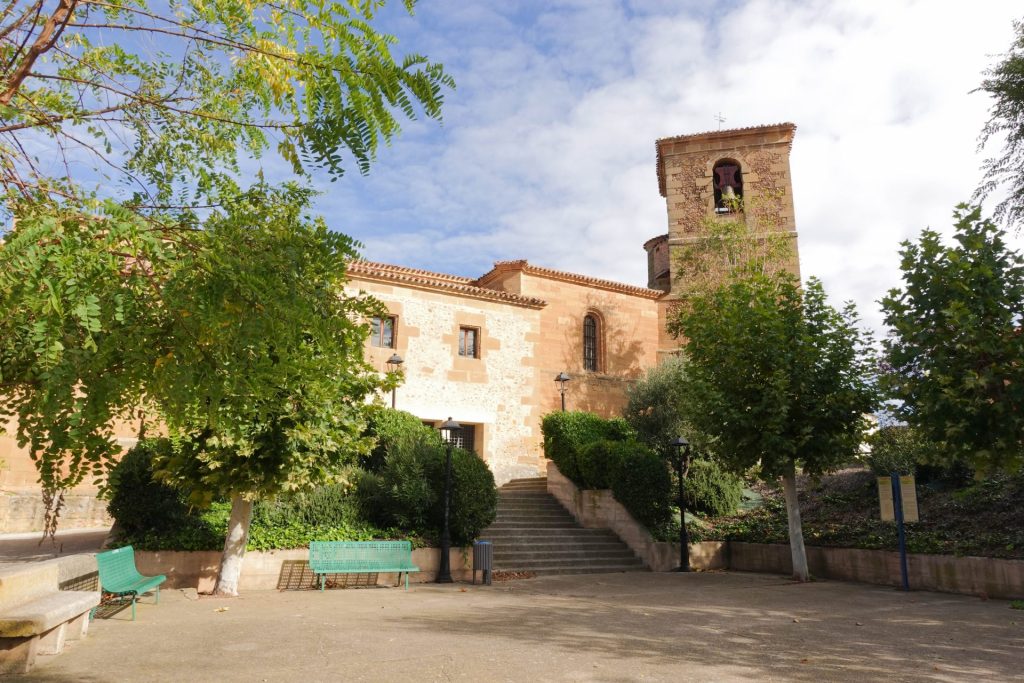
Just 6km from Santo Domingo is the village of Hervías, which maintains all the essence and charm of rural life.
In addition, close to the village is the Singular Natural Area of the Hervías Lagoon, whose main environmental value lies in its geomorphological singularity within the territorial scope of the Ebro Valley in La Rioja, as it is the only natural lagoon of a certain size that maintains its morphological characteristics and in which the water supply comes from the phreatic and surface runoff. This uniqueness is accompanied by the existence of vegetation and fauna characteristic of lagoon ecosystems and scarcely found in La Rioja.
Undoubtedly the ideal setting for strolling and enjoying the scenery.
3.2.3. Ezcaray, its villages and the San Lorenzo Peak

A few kilometres outside the district of Santo Domingo, but just a few kilometres from the town is Ezcaray. a village of 2080 inhabitants nominated First Tourist Village of La Rioja The population of the town has multiplied to 15,000 inhabitants during the summer, although it is true that much of its fame is due to the skiing in Valdezcaray located a few kilometres from Ezcaray on Pico San Lorenzo, the highest peak in La Rioja.
However, the Ezcaray's attractions do not end in the winter sports, but it is the ideal place for the hiking, with countless routes through forests, villages, old monasteries and hermitages. In addition, it has the ensemble of popular architecture most interesting of La Rioja.
We hope you enjoy your tour of La Rioja Alta, if you want to know more about La Rioja you can subscribe and discover some of their best-kept secrets.


